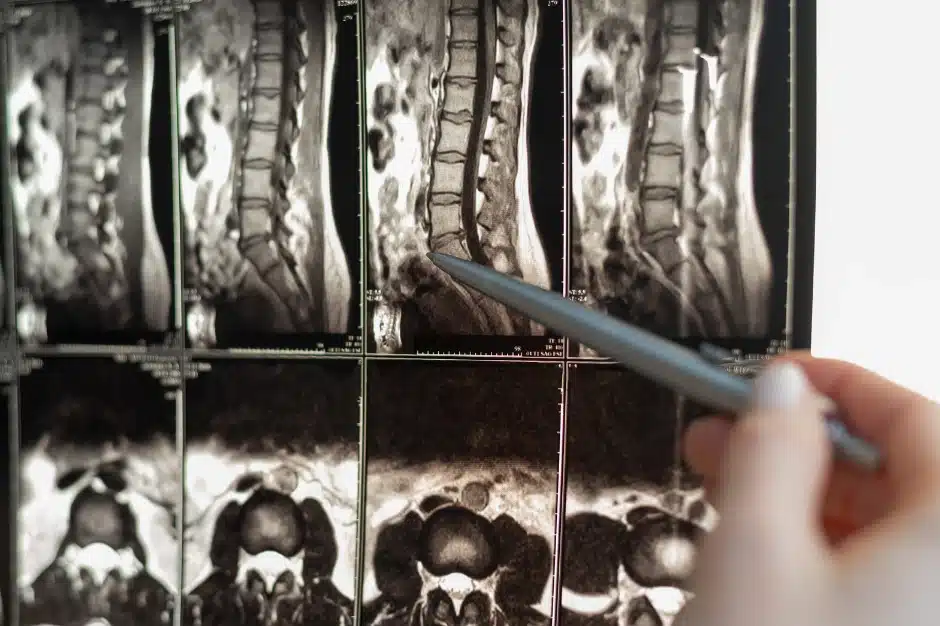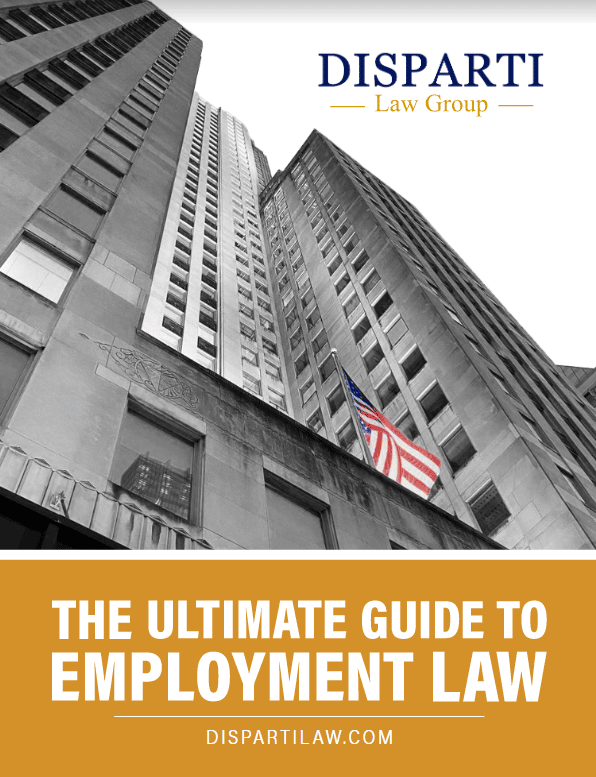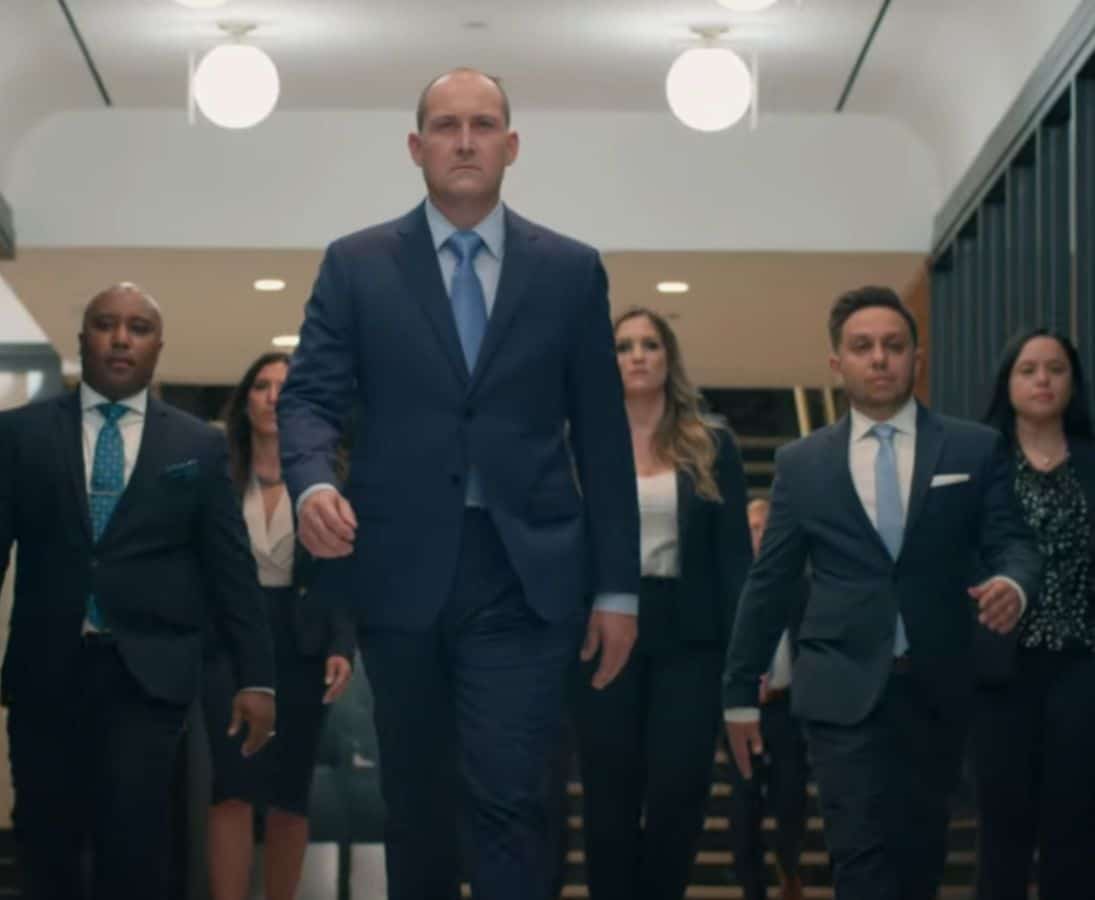Lumbar spinal stenosis is a condition that affects millions worldwide. Approximately 11% of adults in the U.S. suffer from this condition. A person’s spinal stenosis can begin to interfere with their ability to work and make a living. However, is spinal stenosis considered a disability according to the Social Security Administration (SSA)?
The answer is yes.
However, this is not always a simple process and there are several roadblocks you or your loved one may face when applying for spinal stenosis disability benefits. Keep reading to learn what the SSA looks for when granting SSD benefits for spinal stenosis.

In This Article:
- What is Spinal Stenosis?
- How Does the SSA Determine Disability?
- Is Spinal Stenosis in the SSA Blue Book?
- Avoid These Common Setbacks
- Help Getting Approved for Disability Spinal Stenosis
What is Spinal Stenosis?
Lumbar spinal stenosis occurs when the spaces within your spine narrow, putting pressure on the nerves and spinal cord. The spinal cord is essentially a bundle of nerves that run down the center of the spine, branching out from the base of the brain. Compression of the spinal cord caused by spinal stenosis can lead to a range of symptoms including:
- pain in the lower back.
- tingling sensations.
- difficulty walking.
- burning pain that radiates from the buttocks into the legs.
- neck pain.
- numbness that radiates down the arms into the hands.
- weakness in legs, feet, arms, hands, or fingers.
While aging is a primary factor in the development of spinal stenosis, other contributors include injuries, genetics, and certain medical conditions. While some people with spinal stenosis may not have any symptoms, others struggle every day with debilitating pain.
Treatment options can range from physical therapy, to pain management techniques, and in extreme cases, surgery. However, even with treatment, a person with spinal stenosis may still have a hard time doing daily activities, including gainful employment.
How Does the SSA Determine Disability?
The Social Security Administration (SSA) follows a comprehensive process to determine disability eligibility for individuals applying for Social Security Disability Insurance (SSDI) or Supplemental Security Income (SSI) benefits. This process involves several steps:
1. Substantial Gainful Activity (SGA): The SSA first evaluates whether the applicant is currently engaged in substantial gainful activity, which refers to work that generates income above a certain threshold. If the applicant is working and earning above this threshold, they are generally not considered disabled.
2. Severity of Impairment: The SSA assesses the severity of the applicant’s impairment(s) to determine if it significantly limits their ability to perform basic work-related activities. The impairment must be expected to last for at least 12 months or result in death.
3. Listing of Impairments: The SSA maintains a list of medical conditions known as the “Listing of Impairments.” If an applicant’s condition matches a listing and meets specific criteria outlined by the SSA, they are typically considered disabled without further evaluation.
4. Residual Functional Capacity (RFC): If the applicant’s condition does not meet a listing, the SSA evaluates their residual functional capacity (RFC). This assessment considers the applicant’s ability to perform work-related activities despite their impairment, including physical and mental capacities.
5. Past Relevant Work and Other Work: The SSA considers the applicant’s past work experience and whether they can perform any of their past relevant work with their current RFC. If not, the SSA evaluates whether there are any other jobs in the national economy that the applicant can perform given their RFC, age, education, and work experience.
Throughout this process, the SSA relies on medical evidence, including medical records, test results, and statements from treating physicians, to assess the severity and impact of the applicant’s impairment(s). Additionally, applicants have the right to appeal if their initial disability claim is denied.
Is Spinal Stenosis in a Disability According to SSA?
Yes, spinal stenosis is included in the Social Security Administration’s (SSA) “Blue Book” under the musculoskeletal system’s disorders. Specifically, it falls under Section 1.04, which addresses disorders of the spine. According to the Blue Book, an individual with spinal stenosis must demonstrate evidence of at least one of the following:
- nerve root compression
- neurogenic claudication
- lumbar spinal stenosis resulting in pseudo-claudication
Medical documentation such as imaging studies, clinical findings, and physician assessments are crucial in establishing the severity and functional limitations caused by spinal stenosis. Fortunately, even if you do not meet the Blue Book’s criteria for spinal stenosis, you may still qualify if you can show that your RFC is low and that you are unable to perform work-related activities.
A disability lawyer will often know what evidence you may need to show that your spinal stenosis prevents you from working.
Common Challenges
When applying for disability benefits due to spinal stenosis, one of the primary roadblocks is proving the severity of the condition. While medical imaging such as MRIs or CT scans can reveal the presence of nerve compression, this alone isn’t sufficient for approval. Beware of these common challenges many applicants face when applying for spinal stenosis disability benefits.
Pain is Subjective
The agency’s stance on pain as a subjective measure further complicates matters, as what one person deems excruciating, another may consider tolerable. So while some can mitigate it with conservative treatments or sheer determination, others may find the pain unbearable.
This inherent subjectivity makes it challenging to convey the true extent of disability solely through pain reports. Thus, navigating the SSD system with a spinal disorder like stenosis demands not only medical documentation but also a nuanced understanding of the SSA’s criteria and how to effectively communicate the disabling effects of the condition.
Pain Description is Too Vague
Applicants must demonstrate through medical evidence that the spinal stenosis causes chronic pain and weakness, particularly in areas like the lower back, thighs, or buttocks, and significantly hampers their ability to walk.
It’s not just about experiencing pain; it’s about how that pain affects daily function. This requirement often necessitates the use of specific medical language and quantitative descriptions from treating physicians, illustrating the extent of impairment with concrete numbers rather than vague statements.
When describing your pain to your doctor or a medical examiner, do your best to do so in terms of how it limits you from walking and doing other daily tasks. For example, rather than saying the pain is severe every time you wake up, you can say that standing long enough to brush your teeth is challenging.
Help Getting Approved for Spinal Stenosis Disability Benefits
It’s often best to speak to an attorney when you start your application to get approved for disability for your lumbar spinal stenosis. Having a lawyer at the start of the process who understands your condition and how to get the SSA to recognize how it impacts your ability to work can help save time, money, and energy in the long run.
Fortunately, even if you have started the process yourself and you missed a deadline or were denied benefits, it’s never too late to speak to one of our skilled disability lawyers who can jump in and bring your case to the finish line.
Contact us today for a FREE case review for your disability application, no matter where you are in the process. Call (312) 600-6000 and find out why thousands say… Larry wins!









